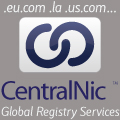Interim At-Large Advisory Committee Comment
ALAC submission to the GNSO's gTLDs Committee regarding the draft final
report of the gTLD committee
16 May 2003
The ALAC supports the latest draft's conclusion that "expansion of
the gTLD namespace should be a bottom-up approach with names proposed
by the interested parties to ICANN"; that "there should be no
pre-determined list of new names that putative registries would bid
for"; and that "expansion should be demand-driven".
Beyond that basic conclusion, however, the ALAC finds that the
specification of objectives or criteria has moved in the wrong
direction since the last draft. The expansion in scope concerns us
on both procedural and substantive levels. Procedurally, the lack of
public comment is troubling, particularly as public input might have
prompted reconsideration of some of the concrete issues we raise
below.
We continue to believe that ICANN should simply oversee development
of a genuine competitive market for domain name services. Basing
market entry on a minimal and objective no-harm evaluation is key to
achieving this goal. While we understand the Council's desire to
give more than a one-word answer, parts of the current expanded
answer lean toward regulating this nascent market more than seems
desirable.
The latest draft appears to conflate "substitutability" with
"confusing similarity," and thus would endorse anti-competitive
prohibitions on similarity in the name of preventing confusion.
Instead, these restrictive criteria would deny Internet users the
widest range of options for name registration and deny market
participants the chance to compete fully with incumbents. We have
trust in the ability of Internet users to differentiate among names
serving similar markets.
In this light, we offer the following comments on the substance of
some of the criteria:
- Criterion 4, "An easily understood relationship must exist between
a new gTLD and its stated purpose": The notion of "easily understood"
is a function of the entity trying to understand the relationship.
When used in an evaluation, this criterion would invite subjective
judgment. It seems more appropriate to leave this question for the
market to answer -- after a TLD has been introduced. Further, we
would emphasize that a TLD's "stated purpose" could also mean the
generic "open to any use." - Criterion 6, "Future names should add-value to the domain name
system." As a key objective of the entire process, addition of future
names should not diminish the value of the domain name system.
Individual prospective names, however, should not be scrutinized for
their added value. Once more, subjective judgment would be involved
on a question which is more appropriately left for the market to
answer. - Criterion 8 seems to suggest that incumbent TLD operators should
have the ability to veto competitors addressing a segment of the same
or a similar market, or to at least dictate competitors' policies, if
these competitors use "translations or transliterations" of the
incumbent's TLD string. We fail to see the benefit of this criterion
to the public at large. To the contrary, it seems to unduly
strengthen the position of incumbent operators over new market
participants, damaging competition. - Criterion 11 seems to suggest that incumbent sponsors should have
privileged access to market segments that would complement to the
markets they are serving now. This criterion would, in the case of
sponsored TLDs, strengthen the role of incumbents even beyond what is
suggested in point 8, and so the same concerns as above apply. - Criterion 12 seems to suggest that new TLD proposals should be
designed to address markets which, if possible, do not overlap with
those served by incumbent TLD operators. This criterion too appears
anti-competitive, rather than to the benefit of the public at large. - Concerning the draft's additional considerations on business
continuity, we recommend that continuity planning be seen as an
opportunity to permit easier entry (because it would alleviate
problems attendant to registry failure), not to further restrict new
entrants.
Thank you,
--Wendy Seltzer
Interim At-Large Advisory Committee, gTLDs Committee Liaison
















